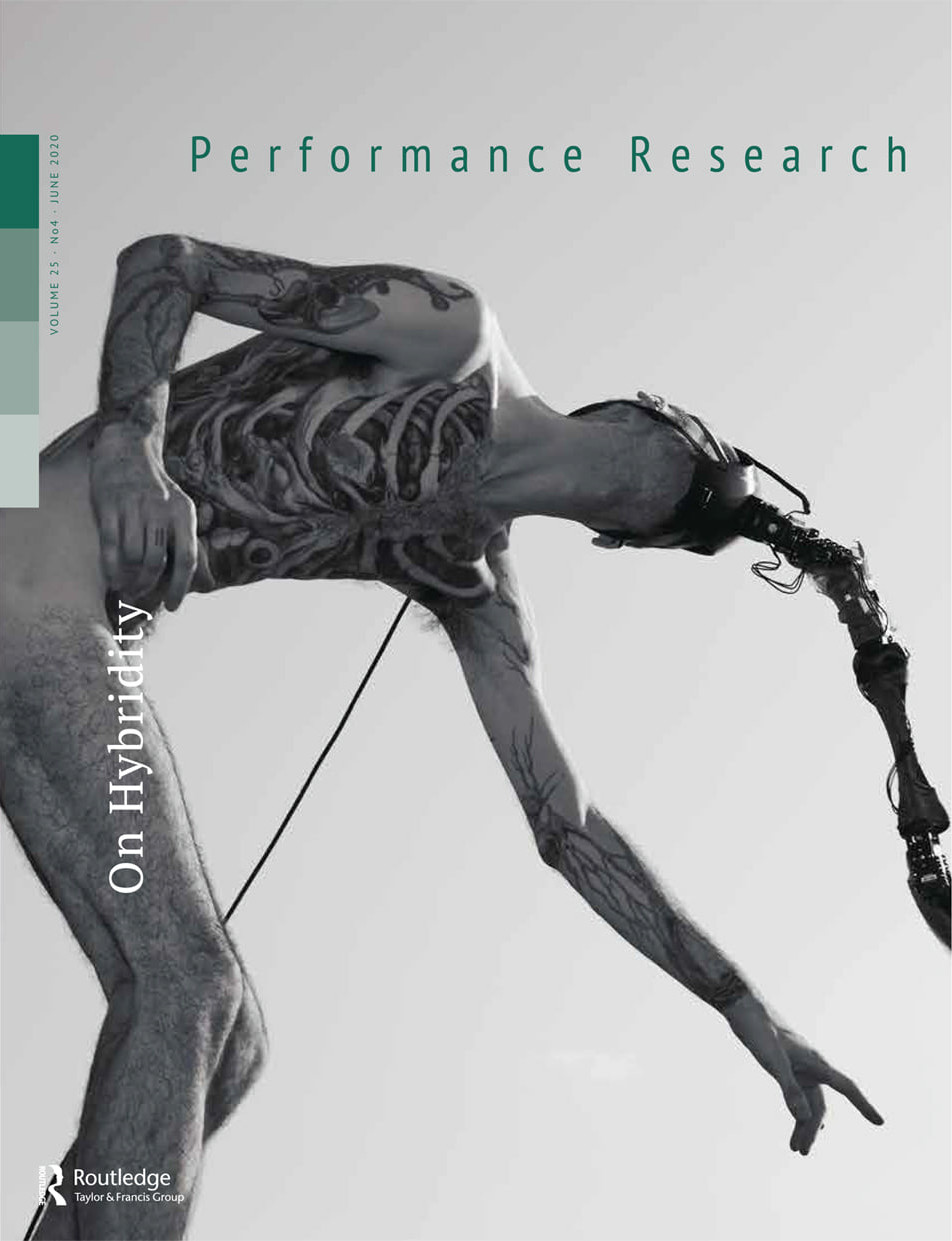Across Bodily and Disciplinary Borders. Hybridity as methodology, expression, dynamic

Formal and systemic boundaries can be problematic, for they easily become vehicles of normative attempts to polarize, enclose and isolate. A tactic that has high political currency today. This essay elaborates on hybridity as methodology, expression and dynamic that can discard bodily and disciplinary boundaries in theatre and performance. Hybridity here will be discussed as a gale, an invisible and more-than-real current of affect, that reanimates the performer’s body, sweeps through non-human bodies and technological instruments, grazes the stage as if it was skin and shakes the physical and formal limits of theatre like bones. Such an investigation must however acknowledge the origin of the term hybridity in enforced miscegenation; from this viewpoint, hybridity is a mark of the systemic, racial violence that whiteness has exerted against other human beings in the name of the supposed universality and purity of the white subject. Hence, my argumentation takes up Sabine Broeck’s proposal to examine whiteness ‘as a white (wo)man’s burden’ and sets out to analyse performance strategies that efface the universality of whiteness through modes of hybridization. Weaving resources on intercorporeality, affect and abjection from feminist, disability and posthuman studies, the essay analyses the hybrid in three artistic practices that, in my view, negate the alleged impregnability of the white subject and affirm its vulnerability: the theatrical living sculptures of Olivier de Sagazan, the dance-less bodyscapes of Maria Donata D’Urso and my own human-machine configurations. An aesthetic and methodological analysis of these works reveal that the very notion of pureness is in itself a fiction, constructed to inhibit the development of a multiplicity of actions and expressions beyond, and within, the borders of dominant cultures.
Read full text - Visit publisher